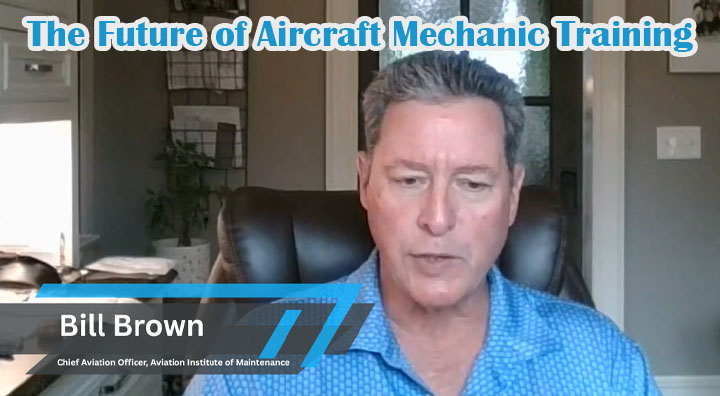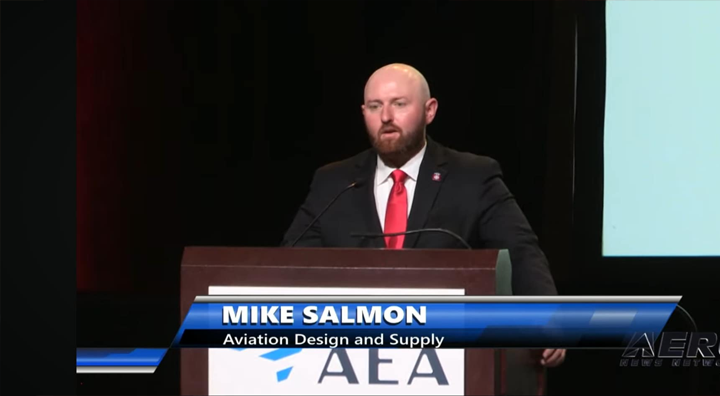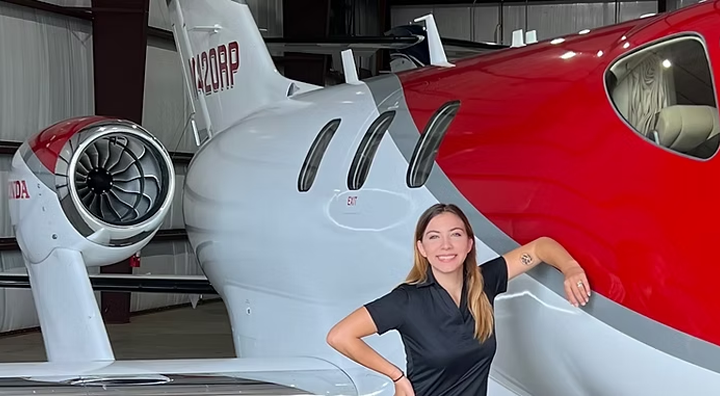From Passion to Profession: Bill Brown’s Journey and the Future of Aircraft Mechanic Training
By Shawn Staerker
Ever stood at the edge of an airport, watching jets roar overhead and wondered what makes them tick? For Bill Brown, that childhood fascination turned into a 40-year career in aviation maintenance that took him from mechanic to executive — and now to inspiring the next generation through quality aircraft mechanic training.
Finding His Wings
Growing up in Arizona near Luke Air Force Base, Bill was mesmerized by the military jets that flew over his house daily. When a friend returned with his A&P (Airframe and Powerplant) mechanic’s license, something clicked.
“I thought, what a great idea to take my passion and go do that,” Bill recalls. He moved to Oklahoma to get his A&P certification while also earning his pilot ratings, becoming a Multi-Engine Instrument Instructor.
Standing at the crossroads between becoming a pilot or a mechanic, Bill made a career-defining choice: “I was just really good at being a mechanic.” That decision launched him through 20 years with airlines and another 20 years in manufacturing and maintenance, repair, and overhaul (MRO) organizations.
Engine Doctor
For Bill, working on aircraft engines was pure magic. Starting in American Airlines’ engine shop, he overhauled JT-8D engines for MD-80 aircraft before eventually becoming a maintenance instructor.
“When you take an engine all the way apart down to just the bare nuts and bolts and put it back together, you feel like you built something from scratch,” Bill explains. “It’s a sense of accomplishment.”
That creative process hooks many mechanics on the profession. Whether rebuilding a massive airliner engine or working on a small Cessna, the feeling is the same – creating something and taking responsibility for its airworthiness.
“It’s like being a doctor, but a doctor of planes,” Bill says. When a plane carries hundreds of people, the responsibility is enormous – and so is the satisfaction of doing it right.
Mechanic vs. Pilot: The Real Story
While many aviation enthusiasts dream of becoming pilots, Bill offers a different perspective. When asked what advice he’d give to teenagers considering aircraft mechanic training, he insists: “Being a mechanic is far more fun because I’ve been a pilot.”
He describes the pilot’s life with a touch of humor: “I’ve done my one hour out, spent four hours in a break room eating candy to fly back, and you did that on Christmas Eve because you’re flying some rich guy’s family to the Bahamas.”
What’s the coolest job? According to Bill: “The coolest job is keeping that airplane functioning all the time so that it’s 100% ready to fly.”
The Next Generation: Aviation Institute of Maintenance
After retiring, Bill joined the Aviation Institute of Maintenance (AIM) as their Chief Aviation Officer, connecting students with employers and helping shape the curriculum to meet industry needs.
With 15 campuses across 13 states and over 6,300 students, AIM trains about 25% of graduating A&P students in the U.S. The facilities feature functioning hangars with engine shops and actual aircraft where students get hands-on experience.
The Growing Need for Aircraft Mechanics
If you’re considering aircraft mechanic training, the timing couldn’t be better. The industry will need over 626,000 new maintenance technicians by 2040, driven by:
- Growth: Airlines expanding their fleets, with manufacturers building more planes than ever
- Retirements: The current workforce is aging – average age has risen from 45-48 to 52-55 years
This shortage creates tremendous opportunity. “These blue collar jobs are paying a hundred thousand dollars in a year, your first year out, if you want to work a little overtime,” Bill points out. And you can earn that with just 21 months of training – sometimes even less with airline partnership programs.
Beyond Airlines: Where Aviation Mechanics Work
While airlines are often the most visible employers, they’re far from the only option. A&P mechanics can work in:
- MROs (Maintenance, Repair, and Overhaul facilities): Offering more stable shifts
- OEMs (Original Equipment Manufacturers): Boeing, Airbus, Parker-Hannifin, and others
- New startups: Especially in the emerging electric vertical takeoff and landing aircraft industry
- NASCAR and racing: Where sheet metal and engine skills are highly valued
Technology Changing the Game
Today’s aircraft maintenance involves cutting-edge technology that’s transforming how mechanics work. Electronic drills automatically attach to the fuselage, precisely drill holes, and fill them with fasteners. Built-in test equipment now diagnoses problems mid-flight and sends messages to maintenance control before landing.
“Technology’s really changed a lot,” Bill explains. “It’s made the job of an A&P far more sophisticated and easier.”
According to Bill, today’s mechanics drive innovation: “A lot of the new technology didn’t come from engineers. It came from mechanics saying, ‘Hey, I got a better way to do this.'”
Getting Started: What You Need
Curious if aircraft mechanic training might be right for you? Bill suggests a few key qualities:
- Curiosity about how aircraft differ from other vehicles
- Research skills for navigating technical manuals
- Mechanical aptitude with tools and components
You don’t need to know everything when you start. As Bill’s instructor told him: “You have a license to learn. That’s what you’ve got to go do now.”
Want to hear more about Bill Brown’s incredible journey through aviation maintenance and learn more about opportunities at the Aviation Institute of Maintenance? Check out his full interview on The Future in Flight Podcast with Shawn Staerker. And if you’re interested in exploring an aviation maintenance career, visit AIM’s website to schedule a campus tour – you might just find your future in the hangar!



